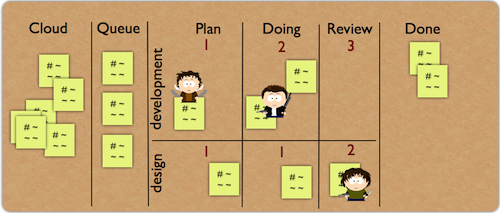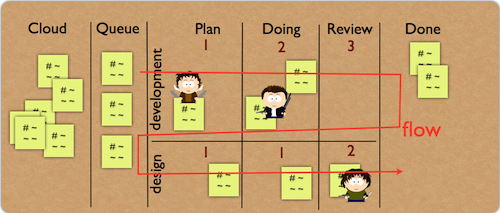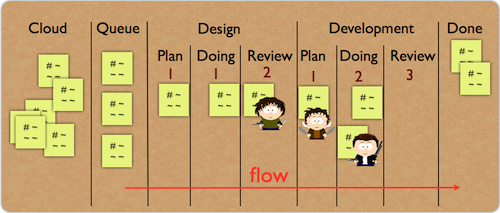Swim lanes on the Kanban board are really handy when different software versions have to walk through the same path or flow. However, they can be deceptive when instead of versions, different development phases have their own swim lanes. Let’s say that an imaginary team decides to upgrade its Kanban system and adds the design that precedes the development phase to the board. The team already has “plan”, “doing”, “review”, and “done” steps (columns) for development, and the design phase also has these steps, so they open a new swim lane for design:

It looks good, provides a great overview on what is happening, but there are issues which cause some problems. The root cause is that the flow in this example is not sequential. The design phase precedes development, therefore the flow goes somehow like this:

On this board, it is hard to track the work items and figure out what the next work item developers can pull is. The design and development phases share the same “done” column, so when a developer is ready to pull, she has to check all the done work items first, and then consult the project manager about priorities. Moreover, improving this flow is very challenging, because improvement requires lead time and in a setup like this the lead time practically doesn’t exist. There is the cycle time of design and the cycle time of development, but the sum of these times is not exactly equal to the lead time, because it doesn’t contain the waiting: the time the design work items spend in the “done” column.
The easy solution would be to have two separate boards for design and development, but that introduces an unnecessary complexity in the flow: the design and development teams have to deal with dependencies and there is a high chance that they are going to have hidden inventories. But there is an even simpler solution: have exactly the same phases in design as in development on the same board:

Now the flow is “straight”, all the internal inventories are visible, and the transition from design and development is also visible and - more importantly - manageable.
comments powered by Disqus